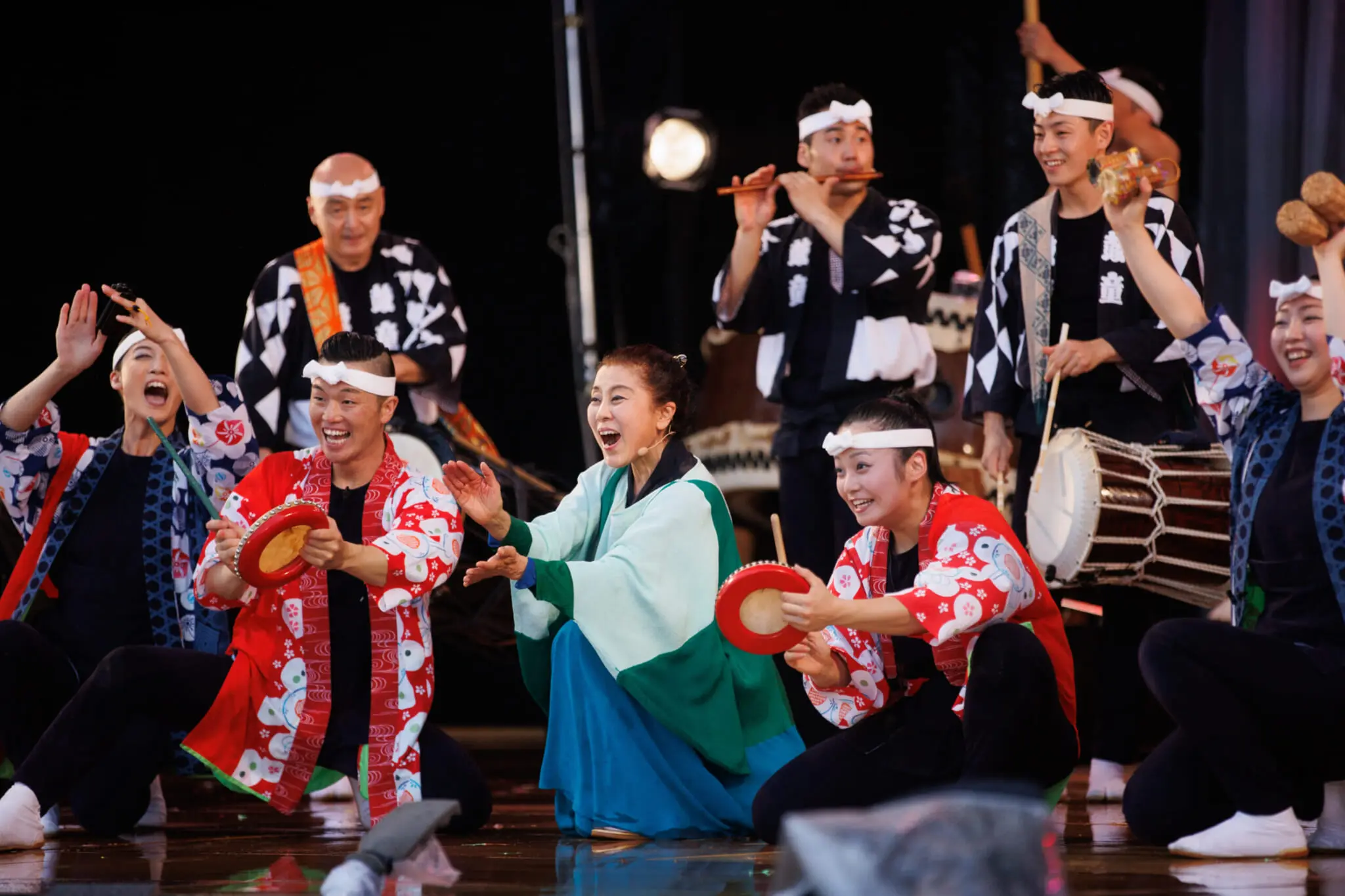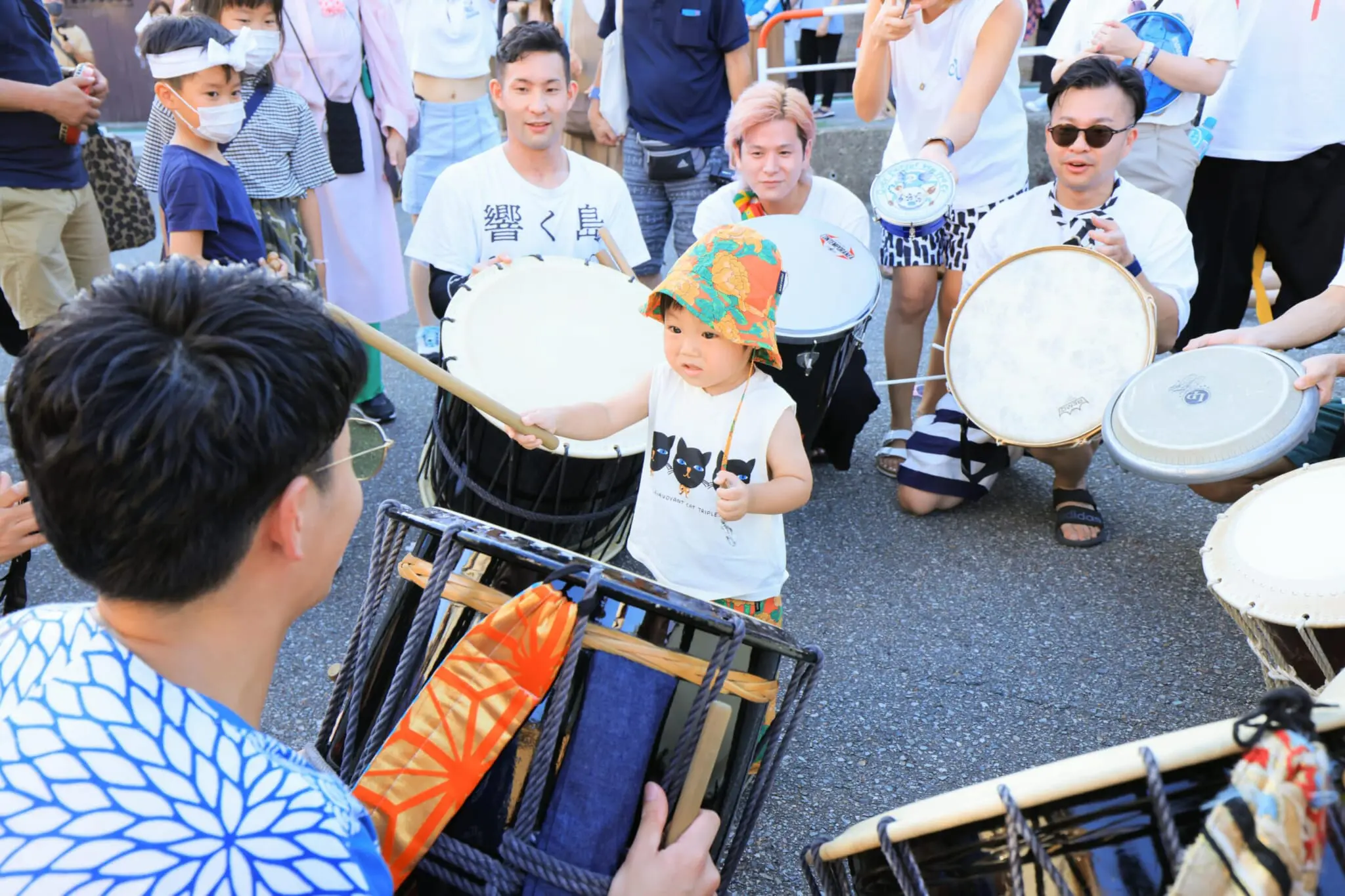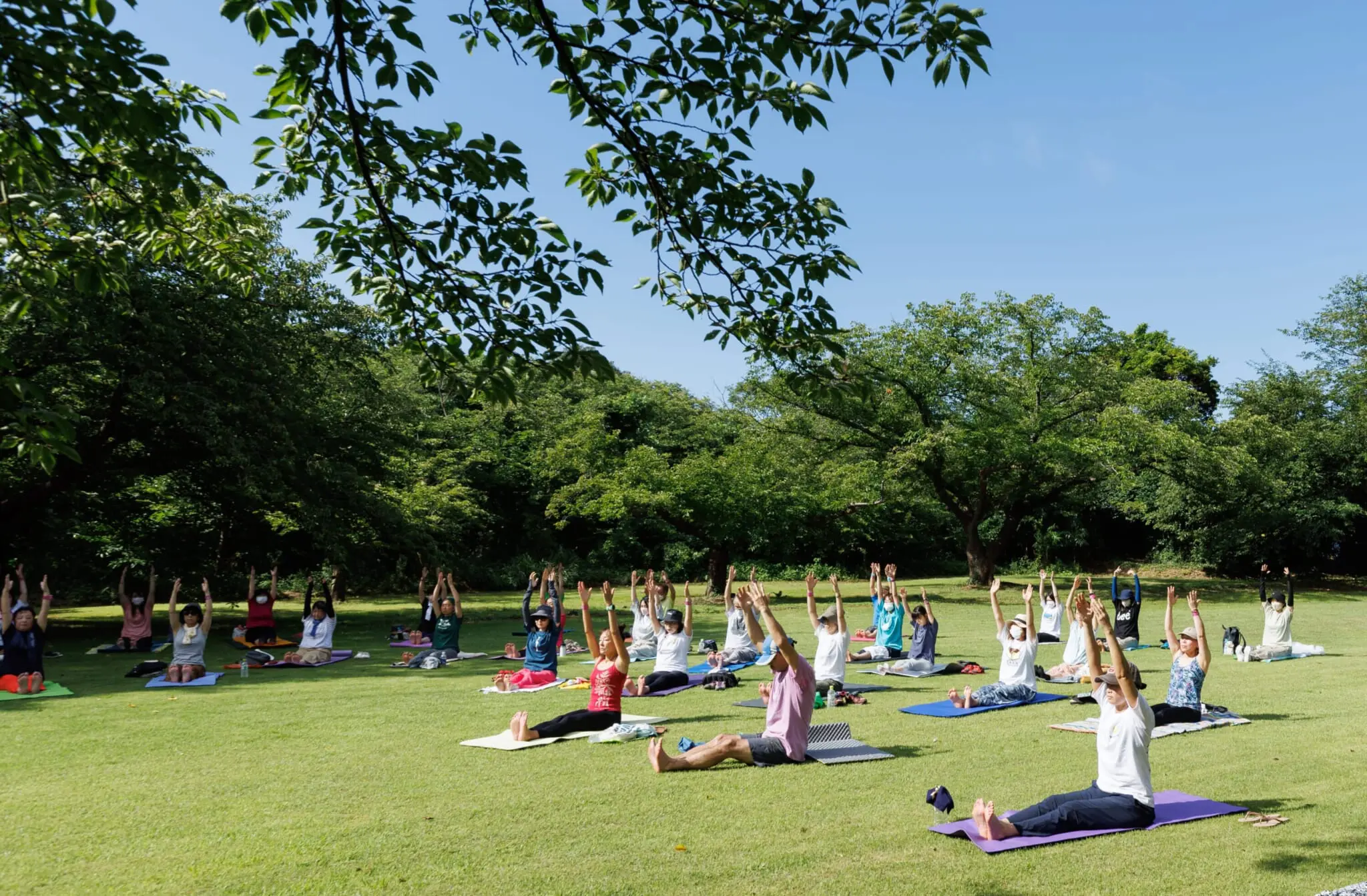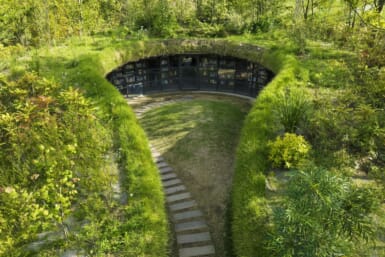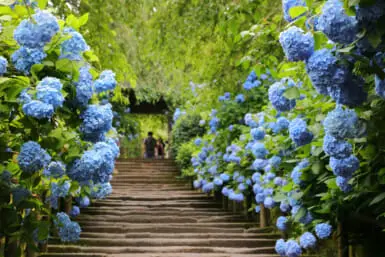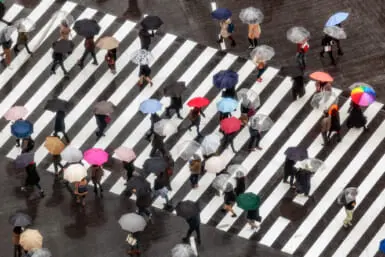Sado Island’s Earth Celebration, one of Japan’s most anticipated music festivals, welcomes musicians, artists and spectators from around Japan and the world every August. In 2019, the event brought around 35,000 attendees to the island.
This year will mark the festival’s 36th anniversary, and festivalgoers will be spoiled for choice with a myriad of activities and performances planned to take place from August 18 to 20, 2023.
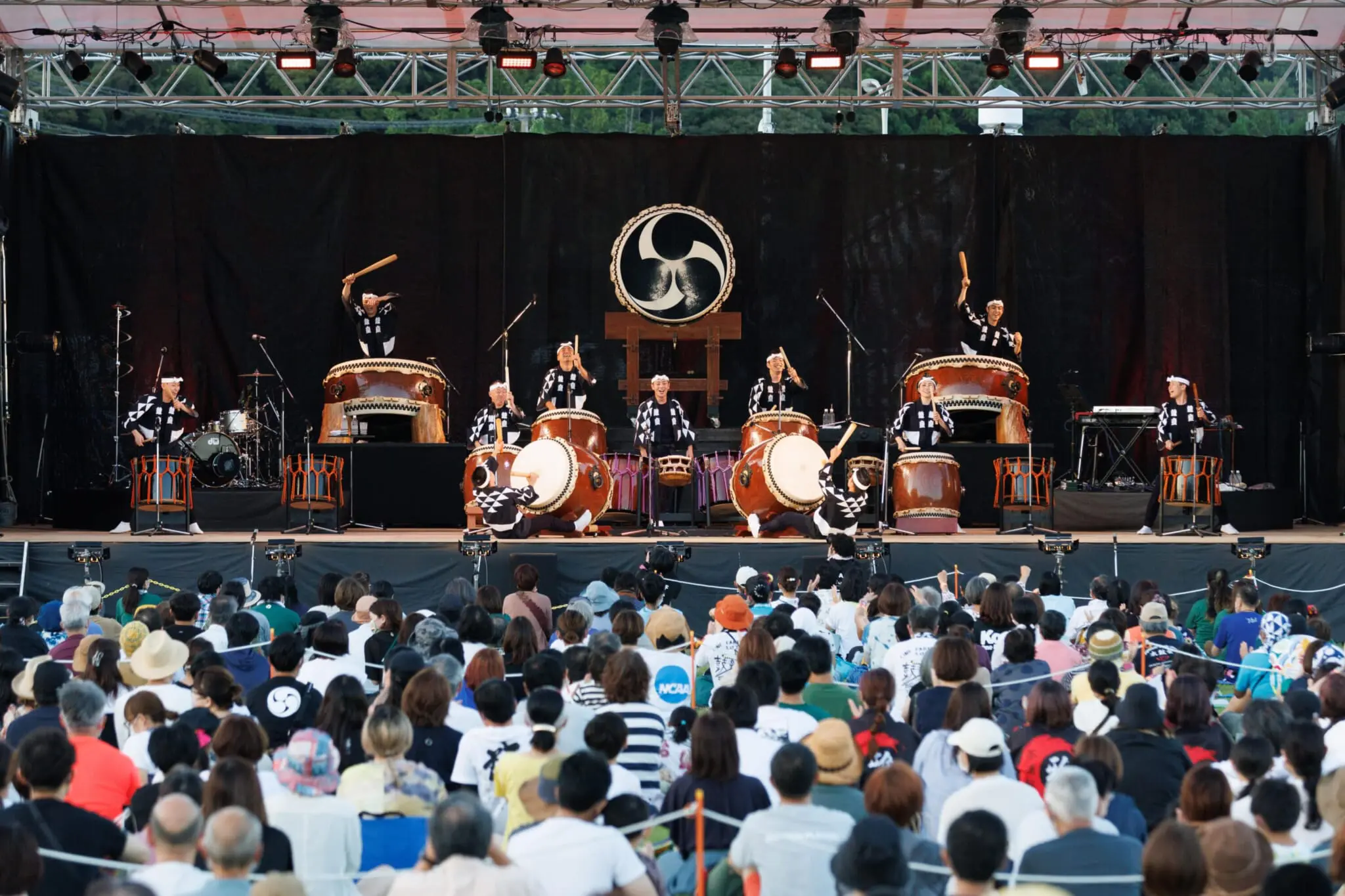
Photo by Kota Yoshida
The Beat of Sado Island
While Earth Celebration is a music festival at its core, the event also features outdoor activities, markets and cultural events inspired by Sado Island. The Kodo Taiko Performing Arts Ensemble and Sado city host the event, which started as an initiative to showcase and share the unique local culture of this region of Niigata Prefecture. In the fall 1983 edition of “Kodo,” the taiko group’s newsletter, founding member and spiritual pillar Toshio Kawauchi discussed the Earth Celebration concept: “Through world music and artistic exchange, using the natural beauty of Sado to set the stage, I would like this event to be an experiment in strengthening the community ties of all the earth’s inhabitants.”
Over the years, people from far and wide have indeed taken notice of Sado Island and its culture, and the festival has touched hearts and inspired admiration.
Since its first event in 1988, Earth Celebration has won numerous awards, but it’s the experience that brings back festivalgoers year after year. There’s something magical about feeling the beat of the drums, reverberating through the soles of your feet, under a moonlit sky surrounded by music lovers from all walks of life. Earth Celebration is an unforgettable, deeply touching event unlike any other in Japan.
This year’s Harbor Concerts promise to be exciting and diverse. The festival kicks off with Kyosui, a performance by veteran members of Kodo that will set the tone for the rest of Earth Celebration. The performance on the second evening will feature multimedia sensations Shuta Hasunuma and Manami Kakudo. For the grand finale, Kodo will hit the stage with the a capella group The Voices of South Africa. The groups first collaborated in 2020 when they met in Belgium, where, despite different mother tongues, cultures and histories, they connected through music. This finale is sure to be moving and is not to be missed. These two performances are just the start — many other musical activities and workshops will be held throughout the festival as well.
A Perfectly Planned Getaway
Earth Celebration — made possible through the collaboration and participation of the residents of Ogimachi, a town at the far south end of the island — is the perfect focal point for a multi-day trip to Sado Island. The festivities are spread across three areas: the Yellow Area, Blue Area and Green Area.
The Yellow Area, which includes Triangle Park and Ayusu Hall, offers a look at Sado Island’s daily life, local businesses and restaurants. Festival activities include the “Traveling Taiko Players” photo exhibition, the Earth Celebration Fair and a number of smaller events. A stop at Hiyoriyama, a bookstore and eatery located between the town center and the port, is recommended.
The Blue Area spreads out around Ogi Port Park and the Sado Kisen Ferry Terminal. Hang out here if you want to spend time by the water and browse the Harbor Market. Harbor Concerts are also held here in the evenings.
Finally, there’s the Green Area, which consists of Kisaki Shrine and Shiroyama Park. On the first evening of the event, a special Earth Celebration prayer will take place at Kisaki Shrine.
As each area is sure to be bustling with activity throughout the festival, you’d be wise to consult the Earth Celebration schedule to work out where and when your must-experience events are taking place.
Should you want to extend your stay or fill idle time outside of the Ogimachi area, you can plan a short excursion to neighboring Shukunegi, a charming retro seaside village with twisty streets and intriguing architecture.
Those with a car should drive to other parts of the island for incredible sights, like the pleasant hike and ocean views from the Onogame monolith. You can also visit Sado’s famed gold and silver mines, one of the biggest and most complex of its kind. In January 2023, the Japanese government resubmitted these historic mines to be listed as a UNESCO World Heritage site. Inside the tunnels, you’ll see animatronic miners that show how workers spent their days. If you’re a fan of Japan’s Buddhist temples, then stop by Chokokuji. The religious site is home to a 20-foot-tall statue of a white rabbit, nicknamed “Rabbit Kannon,” a reference to the temple’s particularly large population of domesticated bunnies. Nihonshu aficionados may want to pop by award-winning Manotsuru and Hokusetsu breweries for a tasting — just be sure to have a designated driver.
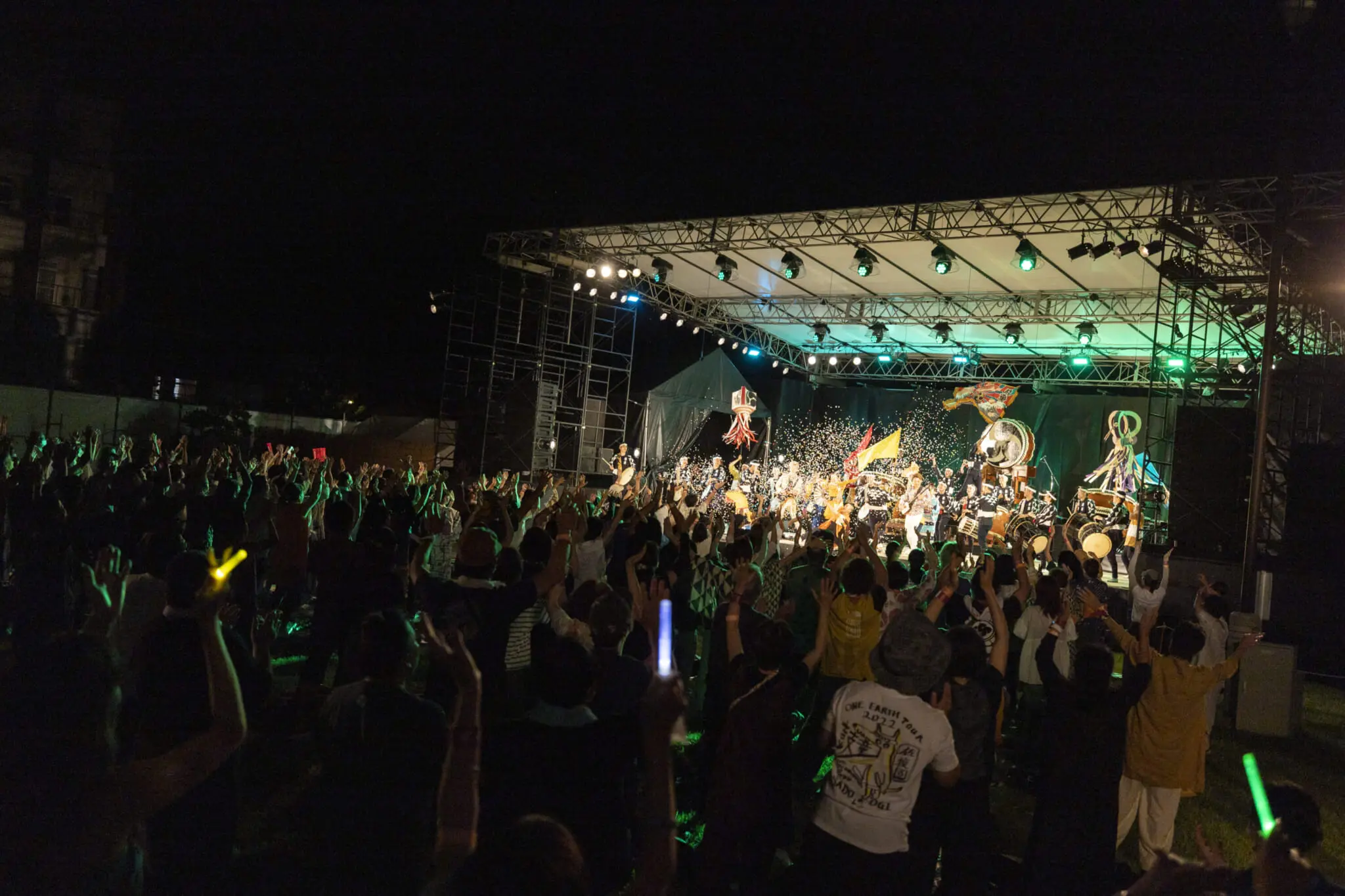
Essential Information
Getting Tickets
As with any music festival in Japan, booking tickets and transportation ahead of time is key. Earth Celebration has three classes of tickets for Harbor Concerts: A, S and SS. A-class ticket holders can enjoy chair seating but will find themselves seated the farthest from the stage. S- and SS-class ticket holders will get to enjoy performances from the lawn, with SS-class tickets getting you closer to the stage.
Three-day passes have already sold out, but there are still plenty of one-day tickets for concerts, ranging in price from ¥4,500 to ¥8,000.
Tickets are on sale until August 16 or until they sell out, and can be purchased online. Attendees should note that concerts will proceed rain or shine.
Certain events held on Sado Island during the festival period are free to enter, however, additional fees may be required in some cases.
Getting to and Around Sado Island
Sado Island can be accessed from Tokyo Station by train and jetfoil ferry (via Niigata Port) in under 3.5 hours. If you’re driving to Sado or taking a highway bus, plan for a 5- to 6-hour road trip. For more information on ferries to and from Sado Island, visit the Sado Kisen website.
Once on Sado Island, a rental car is recommended to get around. To explore your options, see this Sado Island guide.

